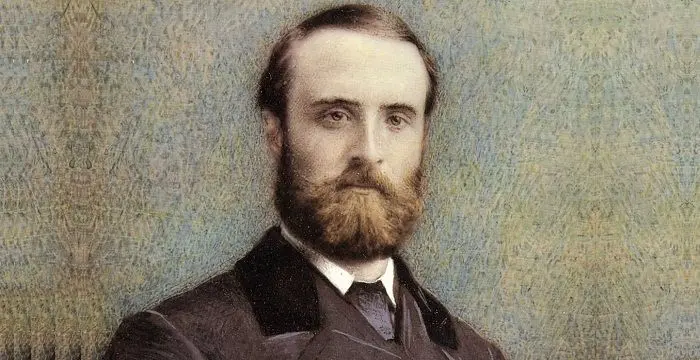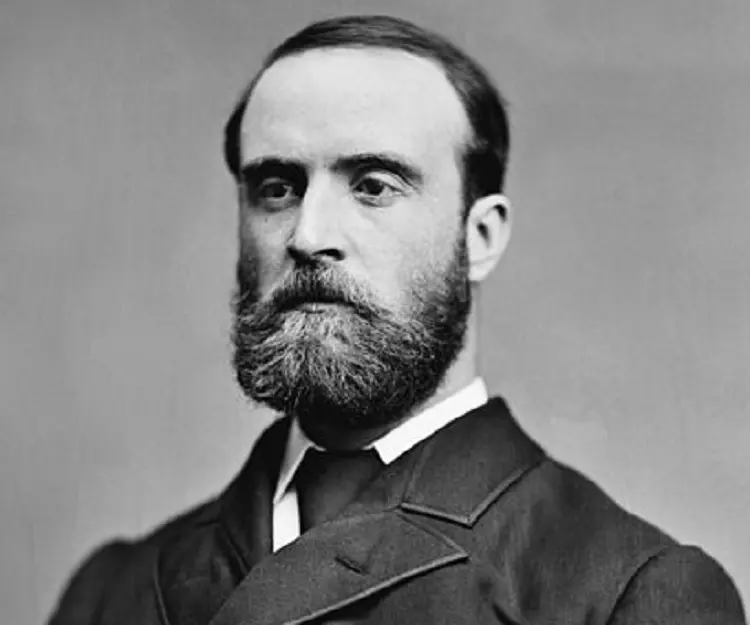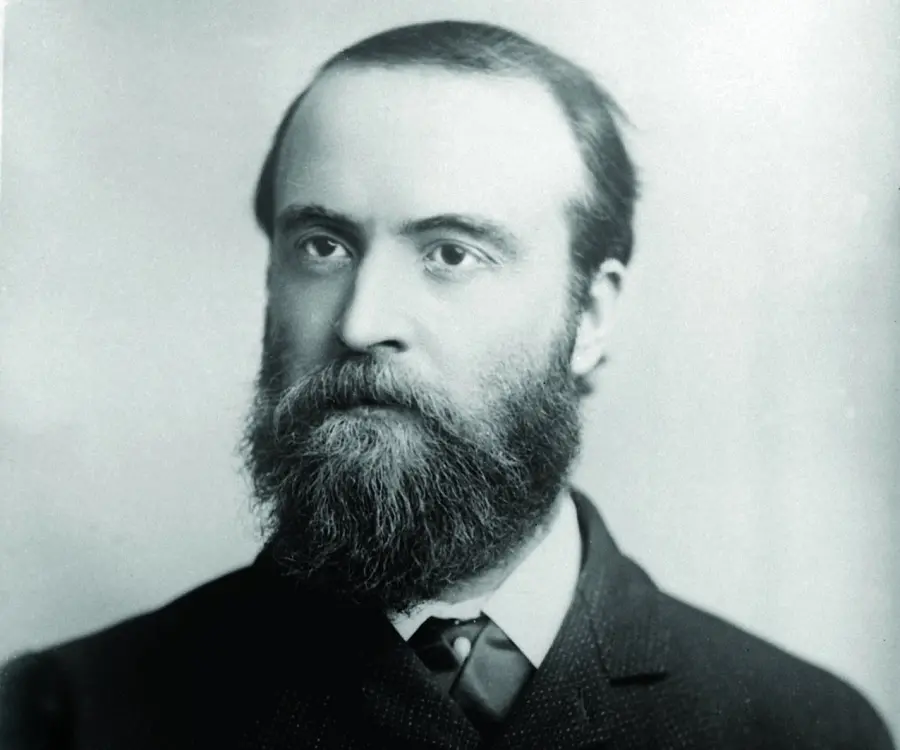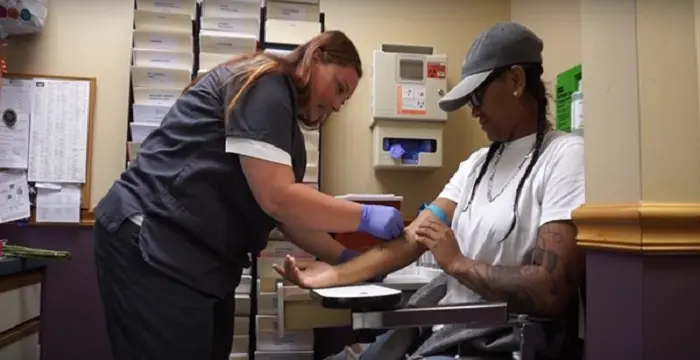
Charles Stewart Parnell - Leader of the Irish Home Rule League, Family and Childhood
Charles Stewart Parnell's Personal Details
Charles Parnell was an Irish nationalist and leader of the Irish Home Rule League
| Information | Detail |
|---|---|
| Birthday | June 27, 1846 |
| Died on | October 6, 1891 |
| Nationality | British |
| Famous | Leaders, Political Leaders, Leader of the Irish Home Rule League |
| Siblings | Anna Catherine Parnell, Fanny Parnell, John Howard Parnell |
| Known as | Парнелл, Чарльз Стюарт |
| Universities |
|
| Founder / Co-Founder |
|
| Birth Place | County Wicklow |
| Political Ideology | Political party - Irish Parliamentary Party |
| Religion | Anglicanism, History of the term |
| Gender | Male |
| Sun Sign | Cancer |
| Born in | County Wicklow |
| Famous as | Leader of the Irish Home Rule League |
| Died at Age | 45 |
Charles Stewart Parnell's photo
Who is Charles Stewart Parnell?
Charles Parnell was an Irish nationalist who served as the leader of the struggle for Irish Home Rule. He was one of the most remarkable figures of the 19th century Great Britain and Ireland. Coming from an Anglo-Irish family wherein anti-British traditions were dominant, young Parnell, like his parents, became devoted Irish nationalist. He actively involved himself in politics and soon made a name for himself. In 1875, he was elected as the Member of the Parliament for County Meath. Subsequently, he joined Isaac Butt’s Home Rule Party and shortly afterwards deposed the latter to become the leader. An efficient orator with effective communications skills, Parnell gained a reputation for himself in the political circle. In 1879, he founded the Irish National Land League and served as its President. He led land agitation for farmers which called for three f’s – fair rent, fixed tenure and free sale of land. The high point in his career came when he stood strong against a case of forgery by Richard Piggott which only heightened his reputation as a national hero and martyr. Parnell’s downfall came in 1889 when a proof of his adultery with Katherine O’Shea, wife of Captain O’Shea was made public. Nevertheless, he is revered by Irish parliamentary republicans and nationalists till date
// Famous Leaders
Edi Rama
Edi Rama is the current Prime Minister of Albania. Check out this biography to know about his childhood, life, achievements, works & timeline.
Tecumseh
Tecumseh was a Native American leader of the Shawnee clan. This biography profiles his childhood, life and timeline.
Khalifa bin Zayed Al Nahyan
Sheikh Khalifa bin Zayed Al Nahyan is the current President of the United Arab Emirates (UAE). Check out this biography to know about his birthday, childhood, family life, achievements and fun facts about him.
Childhood & Early Life
Charles Stewart Parnell was the seventh of the eleven children born to John Henry Parnell and Delia Tudor Stewart on June 27, 1846 in County Wicklow, Ireland. His father was a wealthy Anglo-Irish landowner and had a distant relationship with British Royal family.
Young Parnell grew amidst notable figures in his family who played a dominant role in the literary and political circle of the country. Though he belonged to the Church of England, he gradually moved away from it.
Following separation of his parents when he was barely six, Parnell spent much of his early years at different schools in England. His father’s untimely death in 1859 made him inherit the Avondale Estate.
Academically, Parnell attended Magdalene College, Cambridge from 1865–69. However, he could not complete his degree due to the troubled financial state of his estate.
In 1873, a new political group, Home Rule League was established to campaign for moderate degree of self-government. Parnell rendered his complete support to the home rule movement. In 1874, he became High Sheriff of Wicklow.
Later Life
In 1875, he was first elected as the Home Rule League Member of the Parliament for County Meath in the House of Commons. In his first year, Parnell was a silent spectator. He observed keenly parliamentary proceedings.
Within two years as an MP of Home Rule League, Parnell gained a reputation for himself as obstructionist. He played a leading role in the policy of obstructionism and forced the House to pay more attention to the Irish issues,which had been ignored until then.
Despite being a restrained speaker in the house, he was popular for his organisational, analytical and tactical skills which gained him a seat on the British organisation’s presidency.
In 1877, Parnell conducted a number of private meetings with important Fenian leaders, who impressed by Parnell’s leadership skills granted him their complete support in Irish struggle for self-government.
In 1879, he was elected as the President of the Irish National Land League. As the President of the organisation, he actively opposed the Irish land laws and campaigned for land reform. He believed that the reform would be the first step in the Home Rule Movement.
In December 1879, he made a trip to America for dual reasons—raising funds for famine relief caused by agricultural crisis and securing support for Irish Home Rule League. The trip was so successful that he soon earned the moniker ‘uncrowned king of Ireland’.
Upon returning from America, Parnell contested in the 1880 United Kingdom general election. He supported William Gladstone’s candidacy as the Prime Minister. Upon Gladstone’s appointment, Parnell was elected as the chairman of the Home Rule group in the parliament
Rejection from the House of Lords on moderate measures of Irish land reform led Parnell to organize a massive land agitation. He also gained support of the clergy on this issue.
In response to the land agitation, William Gladstone came up with the 1881 Land Act according to which fair rents were conceded to the farmers. Since the Land Act did not meet the expectations as desired by Parnell, he joined the opposition. His efforts of encouraging boycott landed him in Kilmainham jail in Dublin in October 1881.
In 1882, he negotiated a treaty with William Gladstone, which was called Kilmainham Treaty. As per the treaty, he persuaded his followers to stop violence on all accords.
In 1882, Parnell restructured and resurrected the Land League as Irish National League. With more than 1200 branches spread all over, the Irish National League continued with its agrarian agitation that completely changed the face of Irish land ownership. It led to the passage of several land acts.
Following the restructuring of Land League, he reorganised Home Rule League Party as Irish Parliamentary Party. Membership was introduced within the party which called for professional selection of candidates. Furthermore, he laid the structural foundation that made the party the first modern British political party.
By 1884, the Irish National League was completely under the control of Parnell. Parnell’s popularity had a deep impact over the 1885 general election. Though Gladstone and Liberal Party won the 1885 general election, Gladstone clearly supported the Irish National League.
In 1886, Gladstone introduced the first Irish Home Rule Bill. With this, he hoped to establish an Irish legislature. However, the bill was defeated following the split within the Liberal party. Failure of the Bill led to the downfall of the Gladstone government
By 1886, Parnell became the unabated master of Irish nationalism. He dominated the Irish opinion and brought forth radicals into mainstream constitutional nationalism.
Having dominated the Irish nationalism movement, Parnell had acquired a number of enemies. In 1887, his enemies plotted against him by publishing a facsimile of letters in The Times, allegedly bearing Parnell’s signatures condemning the Phoenix Park murders. It was only two years later that proofs of the letters being forged by Richard Pigott was gained, transforming Parnell’s reputation in the eyes of the English Liberals as a hero and martyr.
The hero-status gained after the Pigott forgery case lasted only for a short while. In 1889, William O’Shea, a loyal supporter of Parnell, filed for a divorce following his wife, Katherine’s adultery with Parnell. The news came in as a shock - Katherine was not just a mistress of Parnell but even bore three of his children.
The scandalous affair with Katherine O’Shea belittled Parnell’s reputation. A split in the party was evident which was followed by replacement of Parnell as the leader as he was declared morally unfit by the Roman Catholics. Subsequently, he became politically inactive.
Personal Life & Legacy
Parnell’s personal life remained dubious until 1889. It was only when Captain O’Shea filed for a case of adultery against his wife Katherine O’Shea with Parnell that people were exposed to his private life. Parnell not just was in a love affair with Katherine, but fathered three of her children as well.
Following her divorce with Captain O’Shea, Parnell married his long-term sweetheart on June 25, 1891 in Steyning Register Office after the Church refused a church wedding.
Towards the end, Parnell’s health gradually deteriorated. However, despite ill-health, he refused to let go off his political life completely. It was later revealed that he suffered from stomach cancer and a serious kidney disease. He breathed his last on October 6, 1891 due to pneumonia.
Every year, the first Sunday after October 6 is known as Ivy Day in which Parnell’s contributions are commemorated.
He has been the subject of various novels, short plays, poetry, movies, television miniseries and fiction.
// Famous Political Leaders
Edi Rama
Edi Rama is the current Prime Minister of Albania. Check out this biography to know about his childhood, life, achievements, works & timeline.
Khalifa bin Zayed Al Nahyan
Sheikh Khalifa bin Zayed Al Nahyan is the current President of the United Arab Emirates (UAE). Check out this biography to know about his birthday, childhood, family life, achievements and fun facts about him.
Leo Varadkar
Cam Leo Varadkar is the current Taoiseach—the Prime Minister—of the Republic of Ireland. Check out this biography to know about his childhood, family life, achievements and other facts about his life.
Charles Stewart Parnell biography timelines
- // 27th Jun 1846Charles Stewart Parnell was the seventh of the eleven children born to John Henry Parnell and Delia Tudor Stewart on June 27, 1846 in County Wicklow, Ireland. His father was a wealthy Anglo-Irish landowner and had a distant relationship with British Royal family.
- // 1859Following separation of his parents when he was barely six, Parnell spent much of his early years at different schools in England. His father’s untimely death in 1859 made him inherit the Avondale Estate.
- // 1865Academically, Parnell attended Magdalene College, Cambridge from 1865–69. However, he could not complete his degree due to the troubled financial state of his estate.
- // 1873 To 1874In 1873, a new political group, Home Rule League was established to campaign for moderate degree of self-government. Parnell rendered his complete support to the home rule movement. In 1874, he became High Sheriff of Wicklow.
- // 1875In 1875, he was first elected as the Home Rule League Member of the Parliament for County Meath in the House of Commons. In his first year, Parnell was a silent spectator. He observed keenly parliamentary proceedings.
- // 1877In 1877, Parnell conducted a number of private meetings with important Fenian leaders, who impressed by Parnell’s leadership skills granted him their complete support in Irish struggle for self-government.
- // 1879In 1879, he was elected as the President of the Irish National Land League. As the President of the organisation, he actively opposed the Irish land laws and campaigned for land reform. He believed that the reform would be the first step in the Home Rule Movement.
- // Dec 1879In December 1879, he made a trip to America for dual reasons—raising funds for famine relief caused by agricultural crisis and securing support for Irish Home Rule League. The trip was so successful that he soon earned the moniker ‘uncrowned king of Ireland’.
- // 1880Upon returning from America, Parnell contested in the 1880 United Kingdom general election. He supported William Gladstone’s candidacy as the Prime Minister. Upon Gladstone’s appointment, Parnell was elected as the chairman of the Home Rule group in the parliament
- // Oct 1881In response to the land agitation, William Gladstone came up with the 1881 Land Act according to which fair rents were conceded to the farmers. Since the Land Act did not meet the expectations as desired by Parnell, he joined the opposition. His efforts of encouraging boycott landed him in Kilmainham jail in Dublin in October 1881.
- // 1882In 1882, he negotiated a treaty with William Gladstone, which was called Kilmainham Treaty. As per the treaty, he persuaded his followers to stop violence on all accords.
- // 1884 To 1885By 1884, the Irish National League was completely under the control of Parnell. Parnell’s popularity had a deep impact over the 1885 general election. Though Gladstone and Liberal Party won the 1885 general election, Gladstone clearly supported the Irish National League.
- // 1886In 1886, Gladstone introduced the first Irish Home Rule Bill. With this, he hoped to establish an Irish legislature. However, the bill was defeated following the split within the Liberal party. Failure of the Bill led to the downfall of the Gladstone government
- // 1886By 1886, Parnell became the unabated master of Irish nationalism. He dominated the Irish opinion and brought forth radicals into mainstream constitutional nationalism.
- // 1887Having dominated the Irish nationalism movement, Parnell had acquired a number of enemies. In 1887, his enemies plotted against him by publishing a facsimile of letters in The Times, allegedly bearing Parnell’s signatures condemning the Phoenix Park murders. It was only two years later that proofs of the letters being forged by Richard Pigott was gained, transforming Parnell’s reputation in the eyes of the English Liberals as a hero and martyr.
- // 1889The hero-status gained after the Pigott forgery case lasted only for a short while. In 1889, William O’Shea, a loyal supporter of Parnell, filed for a divorce following his wife, Katherine’s adultery with Parnell. The news came in as a shock - Katherine was not just a mistress of Parnell but even bore three of his children.
- // 1889Parnell’s personal life remained dubious until 1889. It was only when Captain O’Shea filed for a case of adultery against his wife Katherine O’Shea with Parnell that people were exposed to his private life. Parnell not just was in a love affair with Katherine, but fathered three of her children as well.
- // 25th Jun 1891Following her divorce with Captain O’Shea, Parnell married his long-term sweetheart on June 25, 1891 in Steyning Register Office after the Church refused a church wedding.
- // 6th Oct 1891Towards the end, Parnell’s health gradually deteriorated. However, despite ill-health, he refused to let go off his political life completely. It was later revealed that he suffered from stomach cancer and a serious kidney disease. He breathed his last on October 6, 1891 due to pneumonia.
// Famous Cancer Celebrities peoples
Jacob Elordi
Jacob Elordi is an Australian actor. Let’s take a look at his childhood, family, personal life, career, etc.
Riele Downs
Riele Downs is a Canadian-American actress & Musical.ly star. Let’s take a look at her family and personal life including age, birthday, net worth, boyfriends and fun facts.
Yammy Xox
Check out all that you wanted to know about Yammy Xox, the famous British YouTube Personality; her birthday, her family and personal life, her boyfriends, fun trivia facts and more.
Kaylee Quinn
Kaylee Quinn is an American dancer, model, and actress. Let’s have a look at her family and personal life including age, date of birth, net worth, relationships, and fun facts.
Sophia Montero
Sophia Montero is an American singer and YouTuber. Let’s have a look at her family and personal life including age, date of birth, net worth, relationships, and fun facts.
Domo Wilson
Check out all that you wanted to know about Domo Wilson, the famous American Vlogger & YouTube Personality; her birthday, her family and personal life, fun trivia facts and more.
Charles Stewart Parnell's FAQ
What is Charles Stewart Parnell birthday?
Charles Stewart Parnell was born at 1846-06-27
When was Charles Stewart Parnell died?
Charles Stewart Parnell was died at 1891-10-06
Where was Charles Stewart Parnell died?
Charles Stewart Parnell was died in Brighton
Which age was Charles Stewart Parnell died?
Charles Stewart Parnell was died at age 45
Where is Charles Stewart Parnell's birth place?
Charles Stewart Parnell was born in County Wicklow
What is Charles Stewart Parnell nationalities?
Charles Stewart Parnell's nationalities is British
Who is Charles Stewart Parnell siblings?
Charles Stewart Parnell's siblings is Anna Catherine Parnell, Fanny Parnell, John Howard Parnell
What was Charles Stewart Parnell universities?
Charles Stewart Parnell studied at 1869 - Magdalene College, Cambridge, University of Cambridge
Which company or organization was founded by Charles Stewart Parnell?
Charles Stewart Parnell was the founder/co-founder of Irish National Land League, Irish National League
What is Charles Stewart Parnell's political ideology?
Charles Stewart Parnell's political ideology is Political party - Irish Parliamentary Party
What is Charles Stewart Parnell's religion?
Charles Stewart Parnell's religion is Anglicanism, History of the term
What is Charles Stewart Parnell's sun sign?
Charles Stewart Parnell is Cancer
How famous is Charles Stewart Parnell?
Charles Stewart Parnell is famouse as Leader of the Irish Home Rule League











